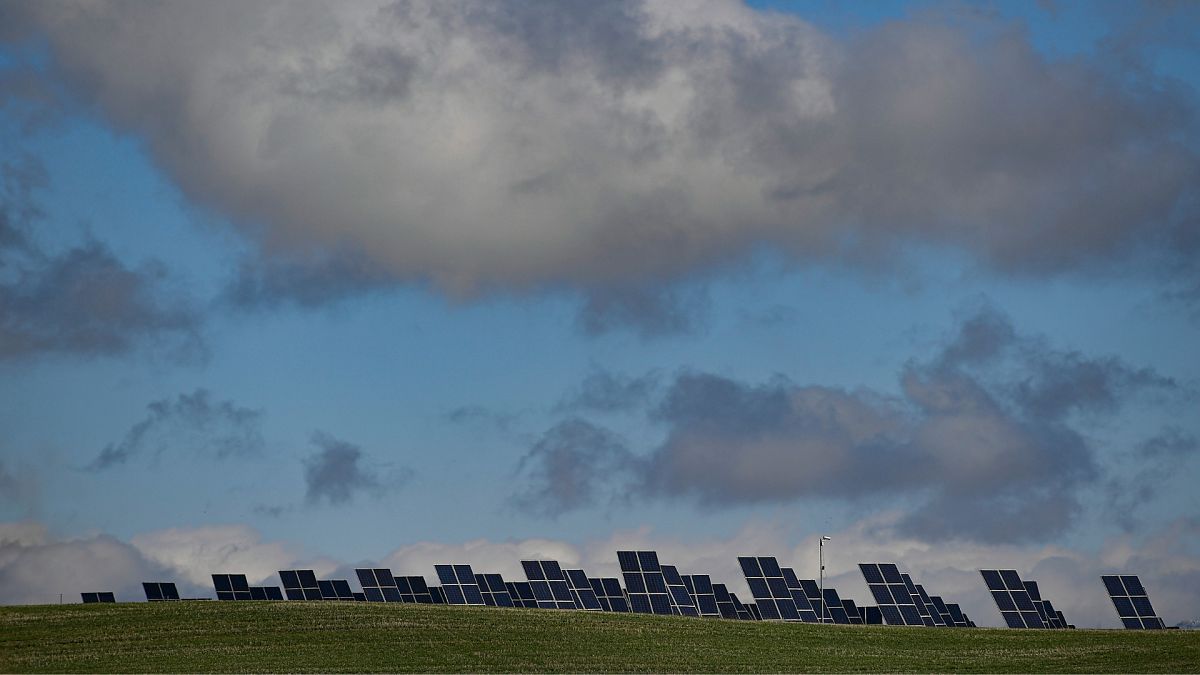Wind and solar power increases combined with a sharp drop in fossil fuels pushed renewables into the lead.
Renewable energy was the leading source of electricity in the EU in 2023, according to preliminary data from Eurostat.
Renewables accounted for 44.7 per cent of all electricity production generating 1.21 million Gigawatt-hours (GWh) – a 12.4 per cent increase from 2022. Rapid installation of new solar and wind projects across the bloc has helped push this figure up.
Electricity from fossil fuels overall fell by 19.7 per cent in comparison, contributing 0.88 GWh or 32.5 per cent of the EU’s power.
Natural gas supply fell by 7.4 per cent from 2022 – the lowest it’s been since 1995. The biggest decreases in consumption of natural gas were seen in Portugal, Austria and Czechia.
Oil and petroleum product supplies dropped by 1.5 per cent. The total supply of these fossil fuels has been slowly decreasing over the years with the slight exception of 2022 during the post-pandemic recovery.
And even sharper drops were seen last year for coal with brown coal, commonly used for electricity generation, and hard coal, used for heating and making steel, falling to their lowest level since records began. This follows a general decline in their use across the bloc over many years.
Why has there been a sharp drop in fossil fuels?
In 2022, the energy crisis and problems with hydropower and nuclear due to a hot, dry summer combined to create a dramatic situation for the EU’s electricity supply. Faced with these issues, the bloc put forward its RePowerEU plan which aimed to save energy, diversify supplies and boost the clean energy transition.
The Eurostat says its preliminary data shows these decisions taken in 2022 appear to have had a “significant positive impact” on the EU’s energy supply. The bloc saw a remarkable increase in renewable energy and a sharp drop in fossil fuels – particularly natural gas and goal.
Which renewable sources grew the most?
Last year was a record year for solar around the world with Europe no exception. It is now one of the cheapest forms of electricity in a majority of countries with prices hitting record lows in 2023.
A study published last year by the University of Exeter and University College London predicted that solar will reach an “irreversible tipping point”, becoming the world’s primary source of energy by 2050.
The preliminary Eurostat data shows that the EU’s biggest renewable energy increase last year came from solar power. Compared to 2022, it generated 18.9 per cent more electricity in the EU in 2023. And, in the five years from 2018 to 2023, output from photovoltaics has increased by as much as 126.3 per cent.
Wind energy installation also broke records in 2023. In Europe, offshore projects and strong growth in the Netherlands pushed up capacity.
In the EU, Eurostat says wind electricity generation increased by 13.4 per cent when compared to 2022. Overall, wind contributed more electricity to the EU mix in 2023 than natural gas.
Electricity from hydroelectric sources was also higher in 2023 than in 2023 but due to droughts and hot weather across Europe limiting capacity, 2022 is seen as an outlying year.
Together, these developments made renewables the leading source of electricity in the EU in 2023.

